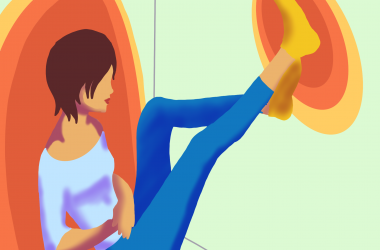Warning: This editorial may cause itching and scratching.
College students beginning the end-of-spring migration from dormitories to mom and dad’s house are half expected to come with baggage, both mental and physical. It’s almost natural that the prodigal academic beast drags adverse — often unhealthy — eating, sleeping and grooming habits back to the parental abode.
It’s practically traditional for returning college heroes to straggle home with bundles of dirty laundry, hoping mom will restore wardrobe order while they ravage the icebox.
The folks, however, likely aren’t anticipating the possibility that their adult children might bring bloodsucking critters home with them. No, we’re not talking about the human strain known as college “roomies,” either. We’re railing about the little parasites mom used to warn about when tucking us into bed at night — bedbugs.
Federal officials predict the U.S. is facing the largest bedbug infestation since World War II. The looming vector crisis even prompted the Environmental Protection Agency to hold a bedbug conference last month, inviting major pesticide companies to help find a solution.
Bedbug infestations have been reported in apartments, dormitories, shelters, hotels and other high-occupancy living quarters in all 50 states, with an increase in their populations of more than 500 percent during the past few years in the U.S.
Congress substantiated the rapidly growing problem by finding that “in 2004, New York City had 377 bedbug violations and from July to November of 2005, a 5-month span, there were 449 violations reported in the city.”
One legislator, North Carolina Democratic Congressman G.K. Butterfield, recently introduced the Don’t Let the Bedbugs Bite Act of 2009. If passed, H.R. 2248 would add $50 million to the Department of Commerce budget to train health inspectors in the fine art of bedbug recognition.
The law would add bedbugs to the U.S. Department of Health and Human Services cockroach and rodent program, and would mandate that the Centers for Disease Control and Prevention investigate the parasite’s impact on public mental health. After all, there is a certain amount of stigma attached to being an insect’s primary food source, right?
It’s important to recognize bedbugs before the itching begins. Bedbugs are flat, oval and wingless, and range in color from brown to near white, turning rust red after gorging themselves on human or animal blood. The global pests grow to about 0.25 inches long and females can lay as many as five eggs per day, producing as many as 500 eggs during their life span.
Scientific experts estimate that between 27 and 41 known pathogens are capable of living in bedbugs. Although no known diseases have been detected as being passed from host to host, many people have allergic reactions and inflammation, according to the Harvard School of Public Health.
Bedbugs are notorious global hitchhikers, first arriving in the U.S. during colonial times. The mattress dwellers can travel in packages, furniture, clothing, boxes, suitcases or pillows, and can survive for up to a year without food.
Bedbugs leave telltale signs of their presence — aside from bite marks and welts. They typically dwell in creases and folds of linens, as well as in the seams of mattresses and box springs. They can also hide in curtain pleats and loose wallpaper, according to HSPH. One way to detect possible infestation is to check for small bloodspots on bed linens.
Evicting the unwanted tenants can be problematic. Bedbugs thrive in areas where debris accumulates. Combating bedbugs requires several strategies, including getting rid of infested articles and cleaning the area with insecticides. DDT and other pesticides were effective in eradicating the pesky varmints, but the EPA banned them in the 1980s.
Websites like hsph.harvard.edu and mayoclinic.com can provide more information about detecting and managing bedbug infestation.
Hopefully, if you’re scratching an itch right now, it’s only psychosomatic because you read this article, not because you have undesirable traveling companions nibbling through your skin. Now, “Sleep tight and….” Well, you know the rest.





It is important to encase your Mattresses & Boxsprings with Full Encasement Bed Bug proof protectors to prevent ever getting an infestation!
Ewww!!!